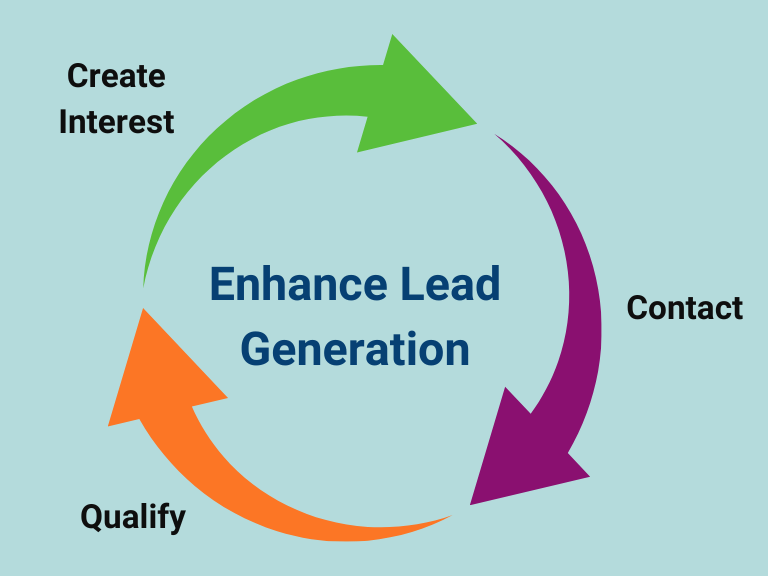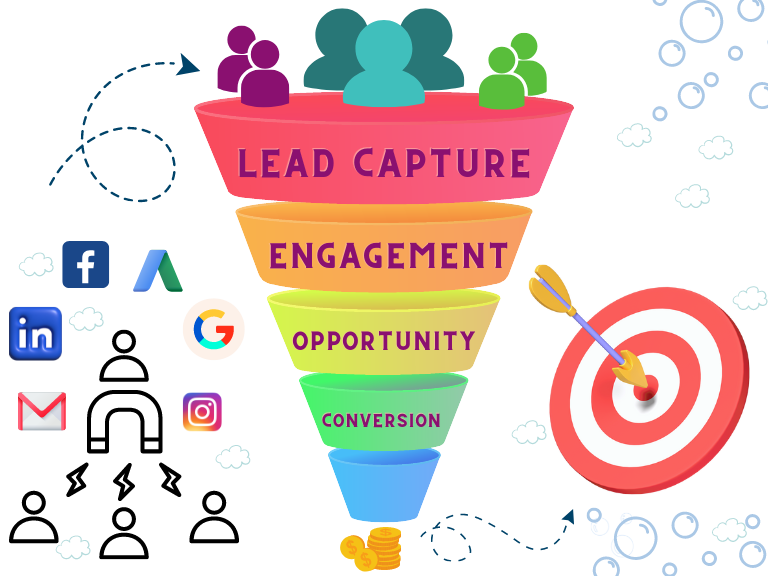What works when it comes to B2B lead generation?
Before diving into lead generation strategies, it’s important to understand a lead concept. A lead refers to someone who has shown interest in your business. However, not everyone can be a leader, as people have diverse interests and requirements. Instead of targeting everyone, businesses should focus on individuals who are genuinely interested in their offerings.
Generating leads is a crucial objective for any company, often requiring considerable effort and investment. Marketers have enhanced their lead-generation skills with modern marketing tools, software, and social media platforms. The most challenging part, however, is identifying high-quality leads. Quality leads can significantly boost sales and ROI, yet many businesses prioritize quantity over quality.
This article will discuss key B2B lead generation strategies and explore effective methods to generate leads and fill your sales funnel with potential clients.

Set Objectives
Setting clear objectives is fundamental to any lead generation strategy. Without well-defined goals, your lead generation efforts may not yield meaningful results, leaving marketers unsure about which actions to repeat. By establishing strategic goals and identifying techniques to reach those goals, you can overcome this challenge.
Before developing a lead generation plan, consider the goals and outcomes you want to achieve. Setting the right objectives allows you to track progress and align strategic goals throughout your organization.
Personalization In B2b Lead Generation
Personalization in B2B plays a crucial role in lead generation. Tailoring your approach to individual prospects can significantly increase the effectiveness of your efforts. By leveraging data and insights, you can create personalized experiences that resonate with your target audience. Customized messaging, relevant content, and targeted offers demonstrate that you understand their specific needs and challenges.
Implementing personalization throughout the lead generation process builds trust, strengthens relationships, and enhances the likelihood of converting leads into valuable customers. Embrace personalization to stand out in the competitive B2B landscape and create meaningful connections with your prospects.
Monitor Key Performance Indicators (KPIs)
Key performance indicators (KPIs) are essential measures that help evaluate the effectiveness of your lead generation activities. They indicate which methods are successful and which require adjustments.
Monitoring KPIs enables you to identify areas for improvement in your lead generation process, leading to a higher volume of leads for your company. Conversion rates, marketing qualified leads (MQLs), and cost metrics are critical KPIs to consider.
Create User-Friendly Landing Pages
Landing pages are a fundamental tool for software firms to generate leads. They offer a focused and engaging experience for your audience while giving you greater control over your campaigns. A landing page is the destination visitors visit after clicking on your email, YouTube, or Google ad. It serves as a bridge between your audience and your company’s offer.
Well-designed landing pages can entice visitors to provide their contact information and become leads.
Test Effectively
While seeking advice from others is valuable, it’s important to remember that what works for someone else may not work for your situation. Testing is crucial to identify areas for improvement in lead generation.
A/B testing is a powerful method for effectively identifying areas to enhance lead generation on your website. It allows you to test various elements such as calls to action, price information, layout, and design options. The greatest advantage of A/B testing is that it provides clear findings, enabling you to quickly implement changes without the need for lengthy planning meetings or predictions.
Utilize Lead Magnets
Lead magnets are valuable resources or incentives companies offer in exchange for contact information, typically an email address. Examples of lead magnets include webinars, booklets, and guides that provide useful information to your users. The objective of a lead magnet is to collect more leads, which can then be nurtured and qualified through the marketing funnel.
While some websites provide valuable content without requiring contact information, this approach does not serve as an effective lead-generation magnet since it needs the necessary information to follow up and close deals.
Conclusion
In conclusion, effective lead generation strategies are crucial for the success of B2B startups. By setting clear objectives, monitoring key performance indicators, optimizing landing pages, conducting testing, and leveraging lead magnets, you can attract high-quality leads and drive business growth.
If you need further guidance or assistance in implementing these strategies for your B2B startup, the experts at Exotto are here to help. Contact us today for personalized advice and support. We understand the unique challenges faced by B2B startups and can provide tailored solutions to maximize your lead generation efforts. Reach out to us now and take the first step towards optimizing your lead generation process.
Key Points
- If technology organizations want to retain growth and remain competitive in the industry, they need to develop distinctive lead generating tactics.
- Setting and tracking the correct goals is the foundation for successful lead creation.
- B2B tech businesses can easily create leads with intent data and establish client ideal profiles.

